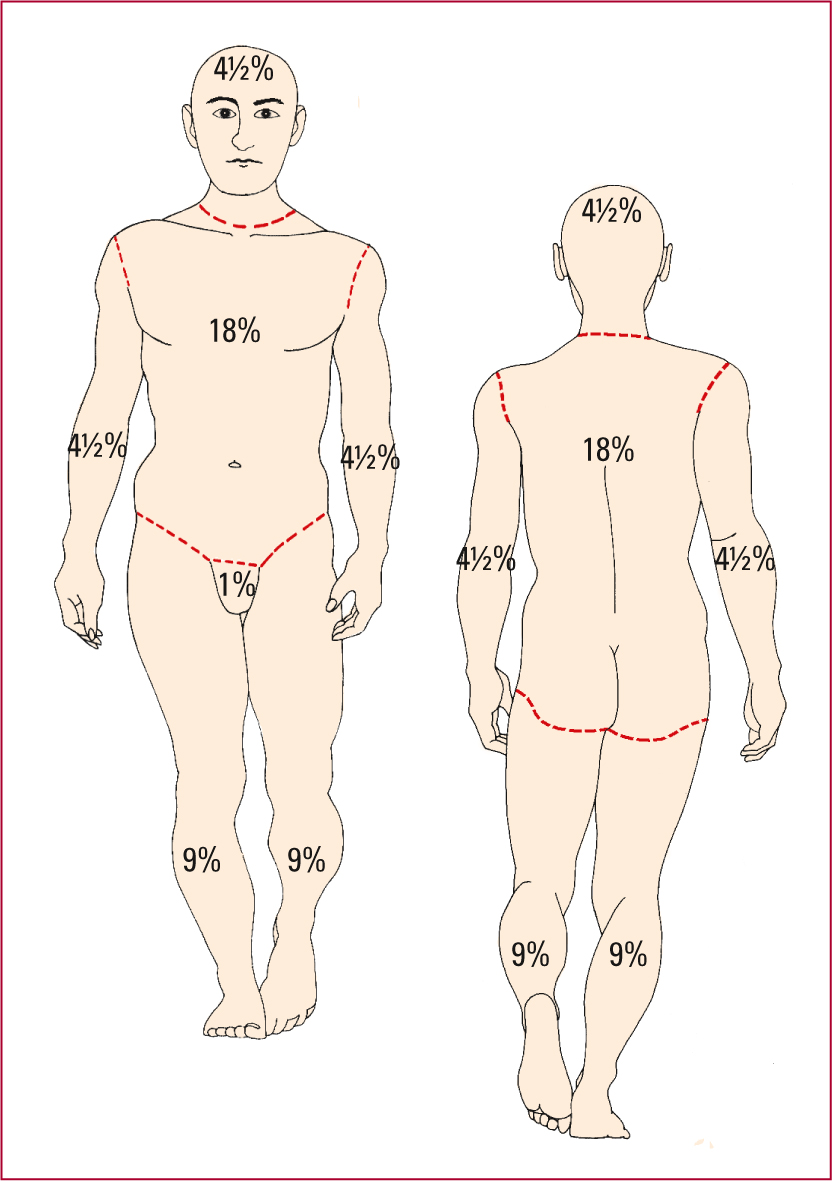Because body surface area varies with age, two different methods are used to estimate burn size in adult and pediatric patients.
You can quickly estimate the extent of an adult patient's burn by using the rule of nines. This method quantifies body surface area in multiples of nine; thus, the name. To use this method, mentally transfer the burns on your patient to the body charts below. Add the corresponding percentages for each body section burned. Use the total—a rough estimate of burn extent—to calculate initial fluid replacement needs. If the burn doesn't completely cover a body area, the burn can be estimated about the size of the patient's palm, which equals 1% of the body.

The rule of nines isn't accurate for infants or children because their body shapes, and therefore body surface area, differ from those of adults. For example, an infant's head accounts for about 17% of the patient's total body surface area, compared with 7% for an adult. Instead, use the Lund-Browder classification to determine burn size for infants and children.

From American Nurse Today. (2015). The ABCDEs of emergency burn care. American Nurse Today, 10(10). https://www.americannurse today.com/abcdes-emergency-burn-care/